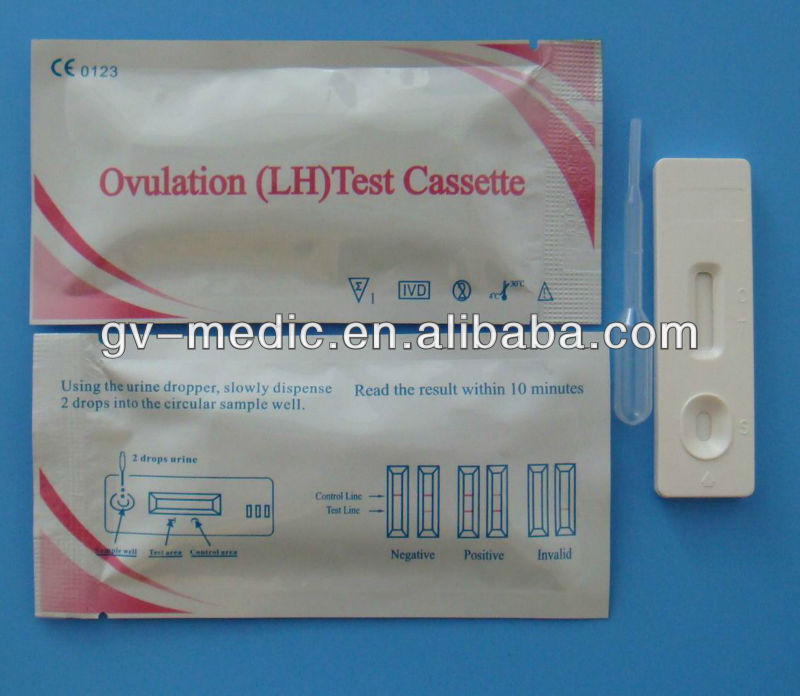Human Luteinizing hormone (LH) is a glycoprotein hormone secreted by the anterior pituitary. This hormone is composed of α And β Subunits. The amino acid sequence of α -LH is essentially identical to that of other hormones including follicle stimulating hormone (FSH), thyroid stimulating hormone (TSH) and human Chorionic Gonadotropin (HCG). It is the β Subunit of LH that confers the biological and immunochemical specificity of the hormone (1).
LH and FSH together with other steroid hormones are known to play important roles in regulating the ovulation and ovarian functions during the menstrual cycle. Maturation of an ovarian follicle and its oocyte begins during the end of the preceding menstrual cycle. In response to FSH released by the pituitary, the follicle undergoes rapid growth. As follicles develop, estradiol secretion begins to rise slowly and is followed by a rapid increase. This increase of estradiol level is generally believed as the trigger for the rapid rise and peaking of LH activity at the mid-cycle (LH surge).
Approximately 24-48 hours after the LH surge, the wall of the enlarged follicle ruptures at ovulation and the mature ovum is extruded. After ovulation, LH returns to its base line level within two days with the concomitant increase of progesterone level to initiate luteal phase. The luteal phase lasts predictably about 14 days. Unless pregnancy occurs, a new follicle begins the selection procedure for maturation in the next menstrual cycle.
Specificaton:
- Product name: Ovulation (LH) Test kit
- Features: easy and simple to use
- Formats: strip, cassette, midstream
- Specimen: Urine
- Read Time: in 1-5 minutes
- Accuracy: >99%
- Sensitivity: 10mIU/ml, 25mlU/ml
- Storage: Room temperature
- Shelf life: 24-36 months from date of manufacture
| LH10A | LH10B | LH10D | |
| Type | Strip | Strip | Strip |
| Package | 1pc x 100/kit | 1PC x 5/kit | 1PC x 10/kit |
| Specification | 3.0mm | 3.0mm | 3.0mm |
Characteristic
- Over 99% accuracy·Simple to use
- Store in room temperature
- A variety of design specifications suitable for self-testing use and for professional use
- 24-36 months shelf life
Performance:
- Sensitivity:10/25 mIU/ml
- Specificity:No cross-reactivity with 200 IU/ L FSH, 250 mIU/L TSH






We have more categories for you. lf you can't find the products you want above,just fill in the form and tell us whatproducts you want to import from China.






















